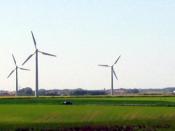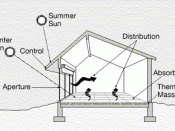Nate Boggs
Tech - Final Assignment
Embodied Energy
In the process of material studies, embodied energy was consistently on my mind. I took the materials of surrounding buildings into consideration. It is clear that brick and concrete are readily available, and will not drastically increase the embodied energy. Such materials have a long structural lifetime, therefore no replacing or damage will occur within the near future. Two units site below grade, which could depend on quite a bit of earth-work, and increase the total embodied energy. Each floor is arranged in an extremely efficient manor to refrain from increasing the total height of the building.
Climate
Four key elements of climate exert influence on general design - temperature, humidity, sun, and wind. Because the given site is located in New England, more emphasis is placed on the fluctuating temperature, and humidity during the summer months. Glazing, ventilation, and shading were all considered during the design process.
Each aspect contributes to creating a thermally comfortable space all year round. Not considered during the process were sloped roofs. Sloped roofs are a vital consideration when designing in the Northern Hemisphere because of snow accumulation, and brutal Northern winds during the winter months.
Thermal Comfort In order to create comfortable spaces during the summer, cooling strategies are used. Overhangs and cantilevers protect the interior from direct sunlight, and solar gain. Minimizing the total heat gain dissipates excess heat, and the building cools naturally. During the winter months, heating strategies are used to enhance the thermal comfort within the building. By creating a thermally massive design, solar heat can be retained and utilized within. Insulation can then transmit the heat gain into the building consistently.
Shape/Orientation
In order to maximize daylighting, the building façade is designed to reduce the need for artificial lighting. The...


